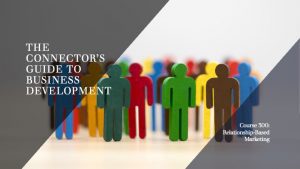How Buyer’s Buy: The 6 Stages of the Purchasing Cycle
An understanding of the purchase cycle can help SMEs plan their outreach activity. In planned purchases of professional services (as contrasted with unexpected demand stemming from a crisis), a potential buyer usually adheres to a procurement or purchasing cycle. It is the SME’s responsibility to align their selling cycle with their ideal client’s purchasing cycle.
The Purchasing Cycle has 6 stages.
- Stage 1: Need Arises. Something occurs to trigger demand. For example, the Buyer receives a request for specialized advice from a business unit. Another example is if certain deliverables, such as audited financial statements, are due at a certain time each year.
- Stage 2: Awareness. The Buyer becomes aware of possible providers perhaps by asking for recommendations, searching the internet, or revisiting an email that the Buyer received from a potential provider months ago and flagged.
- Stage 3: Consideration. The Buyer researches and considers various offerings and eliminates those providers and offerings that the buyer deems unsuitable.
- Stage 4: Preference. This is the most critical stage. Here, the Buyer evaluates the providers who made its short list, perhaps engages with them directly, and settles on a preferred vendor.
- Stage 5: Purchase. The Buyer negotiates with sellers, usually in order of preference, and completes the purchase.
- Stage 6: Loyalty. This is a post-sale step when the Buyer receives the procured services and has the potential to become a loyal repeat client, a reference, and a source of referrals if the client experience meets the Buyer’s expectations.
Now that you understand how buyer’s buy, you can adjust your selling activities accordingly.











No responses yet